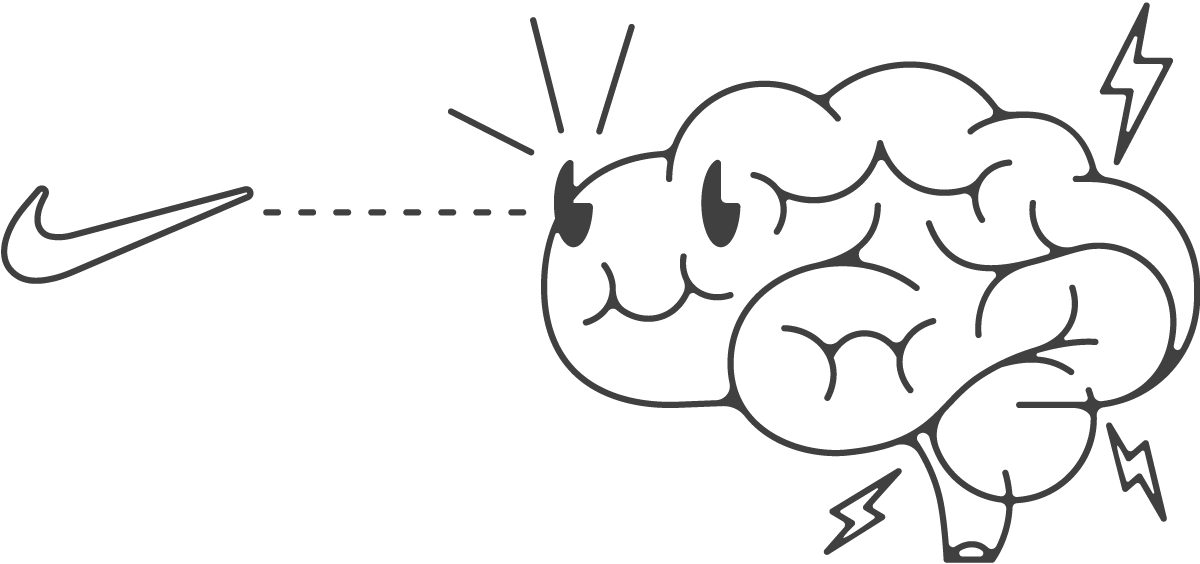Businesses are very dependent on visual presentation. From stocking shelves nicely, dressing well, or plating an entrée just right so it looks picture perfect, every business depends on the power of visual stimulus.
This is what makes logos so impactful and a crucial part of the brand’s entirety. This importance is why the timeless adage “people eat with their eyes first” exists; it’s incredibly true! Your business acknowledging this and applying its truth will improve your overall brand and the success of your business.
Logos play a central role in the visual brand equation as it is a visceral visual representation of your business and the effective anchor for the brand’s perception to be associated with. When there is a lack of unique attributes or nothing to remember the logo by, it becomes irrelevant and forgotten. Or worse, the logo has not been treated well and drop-shadowed, stretched or modified from its initial, intentional design. The importance of a logo is also why abusing your logo is a definite disservice to your brand.
Effect of Logos and the Brain
The effect of logos is completely visual. Logos aren’t tangible, but a visual abstraction of a concept. Even a concept can be designed and displayed in an array of different ways that would all communicate to your audience differently and have different results. The effect of a logo can be traced back to our brain’s structure. The brain has a lot of things going on to intake information, but the organ is structured in such a way as to emphasize visual information above anything else. Our visual cortex and system takes in a ton of information every day as well as is the main component that keeps other inputs in check. The importance of this visual department in our neurological system is expressed in the amount of size devoted to it, as well as its executive abilities to override other systems. It’s very powerful!

This makes the whole “people eat with their eyes first” make a lot more sense and reinforces our reasoning to lean into visual presentations. This makes logos that much more effective and important because we can leverage the brain’s desire to intake information as well as create meaning.
The effect of logos is made obvious by the visual memory we retain and can quickly recall when we even think of colors and shapes. For example, if I said circle + red, you might think Target. If I say circle + green, you might smell coffee or start to crave the caffeinated ritual. These examples can go on and on as the visual system determines our experience.
A brilliant example of this is a blind tasting of wines. Recently, a group of researchers had a handful of experienced wine enthusiasts at a table to enjoy unmarked wines. Their job was to try each red wine and write tasting notes. Each glass glistened with the ruby red color of a deep red wine and as they wrote their notes they described typical traits found in red wines. Each was thoroughly accurate to the description of a classic red, but what they didn’t know is that a few of the wines were white with red dye. The tasters drank a white wine that had red dye yet described its profile like a red wine. The visual presentation of color overrode the actual taste and told the brain it was a red wine when tasting would definitely declare it a white wine. Amazing!
Just as a logo for a premium brand can portray the business as more elevated or a more accessible product can have a logo that is warmer and more welcoming, the logo’s effect is beyond just a stylistic decision. The effect of the logo is based on a strategic design decision that is portraying the business in a specific way so the brand can be perceived according to the objective. The logo’s effect is just like what the red dye did for the white wine. It transformed the experienced and changed the entire perception the audience was conjuring.
The logo is a brilliant point of leverage for a business when designed properly. It can create an effective brand that drives profitable results for the business.

